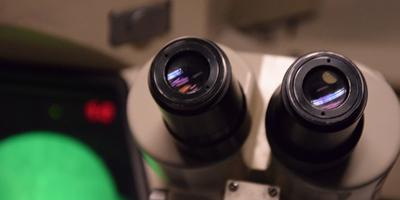Southampton scientists exploit new technologies to study blinding retinal diseases

Scientists at the University of Southampton have used cutting-edge 3D reconstructions alongside standard microscopy techniques to study how a cell layer underneath the retina, called the Retinal Pigment Epithelium (RPE), becomes damaged in eye disease.
The main purpose of the RPE is to maintain the light-sensitive photoreceptors of the retina. Damage to RPE cells is one of the first steps leading to irreversible blindness, but how this happens is still not fully understood.
The Southampton study, published in Cells, used 3D reconstructions to assess how damage to the RPE is caused by their inability to correctly transport molecules inside them.
These events, which occur with age and disease, are normally quite difficult to visualise in detail. However, scientists at Southampton have used the latest advances in imaging and computing technology to study these pathways in the RPE for the first time.
Dr Arjuna Ratnayaka, Lecturer in Vision Sciences within Medicine, who led the study, said “ We hope these new ways of imaging RPE damage will provide novel insights into ways of preventing retinal diseases that cause irreversible blindness.”
